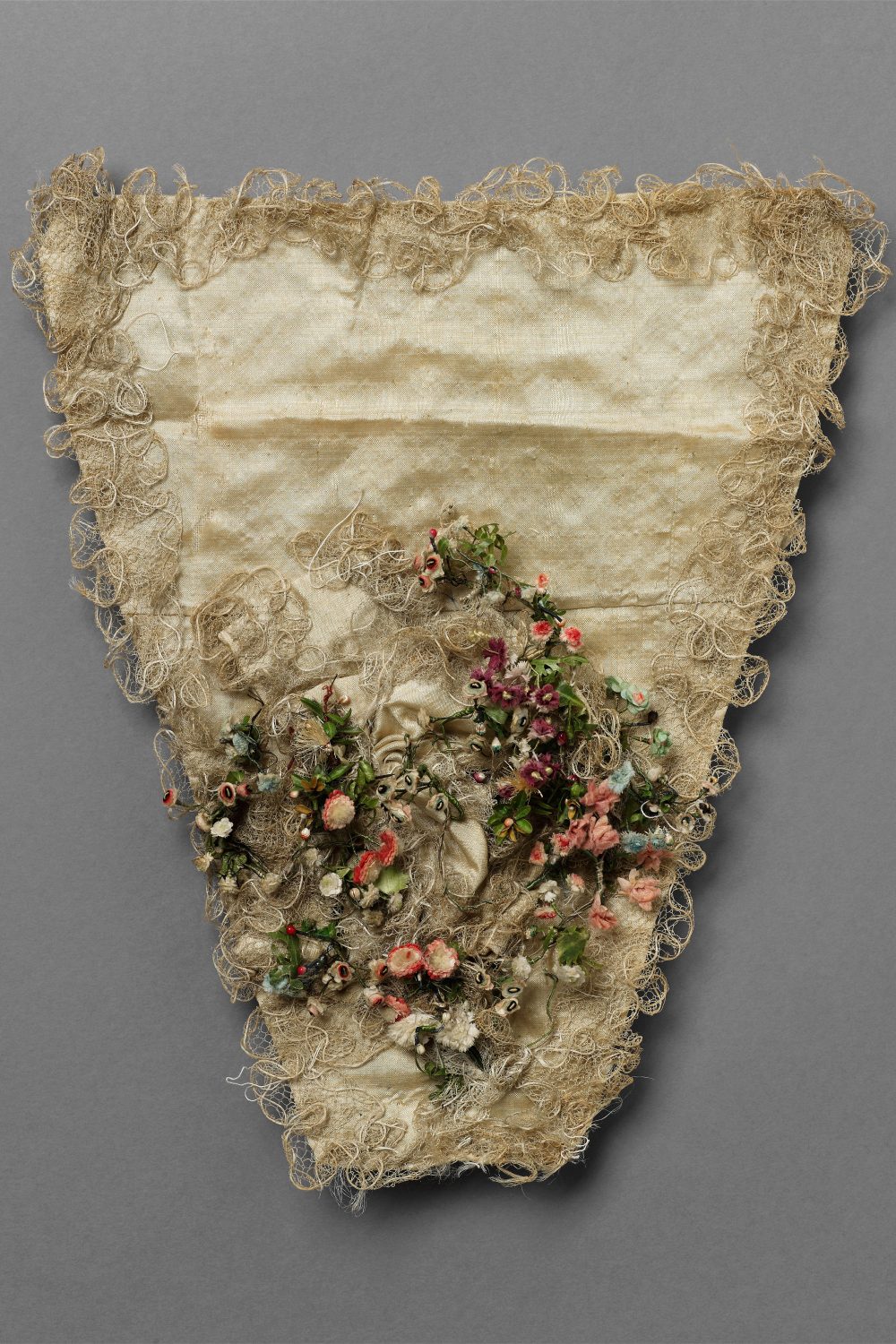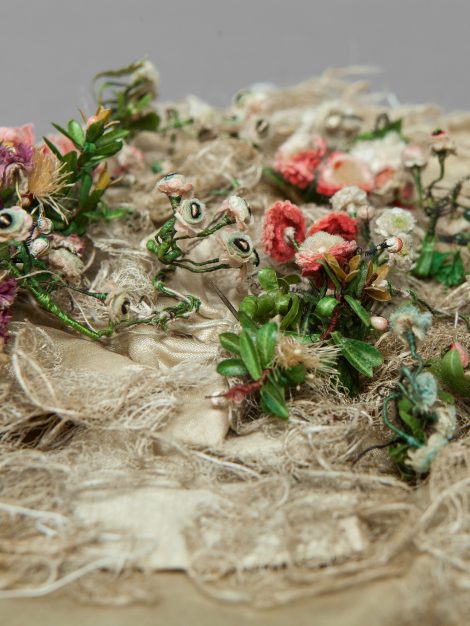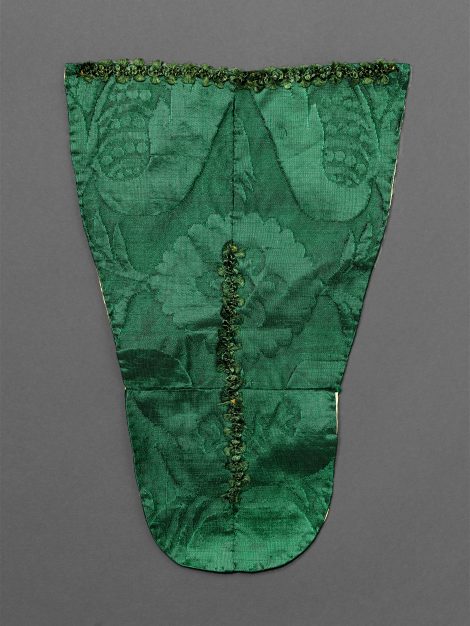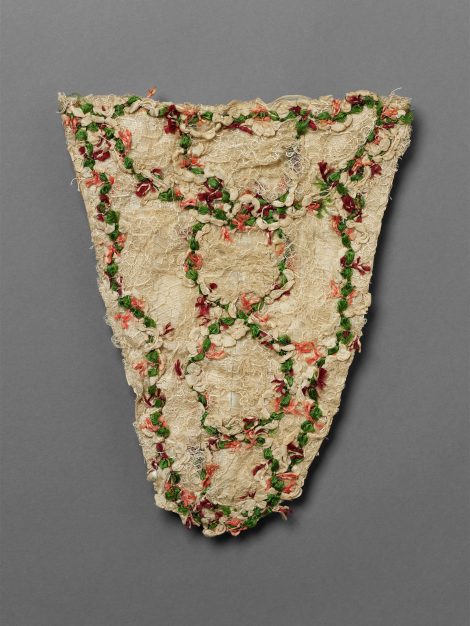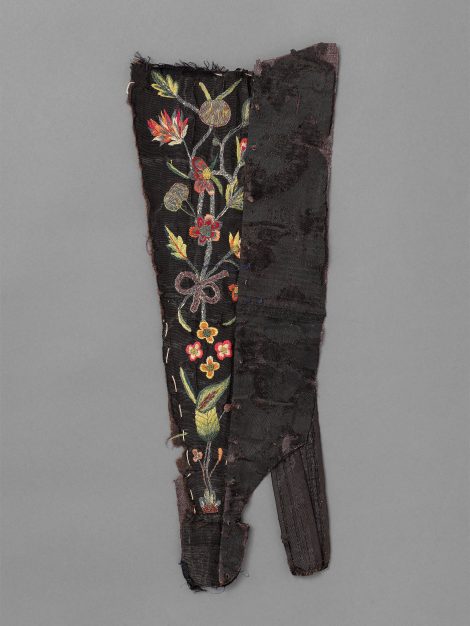Acquired from Jenny Pearson
Stomachers were flat, roughly triangular pieces of fabric that were pinned or sewn over the stays to cover the area exposed by the centre front openings of the bodices of 18th Century gowns. Loose informal gowns, held in at the waist but otherwise open above and below, were worn by women as comfortable alternatives to more rigid dresses from the 1660s; the centre front bodice openings, covered by stomachers, and skirt openings, revealing petticoats (underskirts) remained as vestiges until fashion moved on in the closing decades of the 18th Century. Both stomachers and petticoats were subject to current fashions, discreetly matching the gowns with which they were worn, or providing contrast and decoration.
The stomachers included on this website belonged to a well-to-do West County farming family, coming in to the John Bright Collection with other fine items of 18th Century dress, some of which are included on this website. The examples illustrated here and as a Related Item, both date from the 1760s or early 1770s when women’s fashion, along with many other forms of applied arts, had been influenced by the lively decorative Rococo style, characterised by the use of asymmetrical undulating forms to create busy, broken surface decoration. The stomacher had become a focus of ornamentation, along with the gown’s robings bordering its front opening, sleeve ruffles and petticoat, frequently covered with meandering bands of gathered or puffed silk and decorative braids. These braids, known as fringe, were formed of delicately coloured cords and knotted and tufted floss silks, often resembling small flowers and foliage. Along with the silk fabric they would have been chosen and purchased by the costumer to be taken to her mantua maker to be made into a gown.
This cream silk stomacher is bordered with blonde bobbin lace. The lower section is decorated with tiny flowers – some like little pompoms, buds, berries and leaves on stems of wire wrapped with green silk thread, standing proud from the loops of cream silk beneath, to which they are attached. In places the silk thread has perished or been displaced, exposing coiled wires like small springs, so that the flowers etc. quiver with movement. Stitch marks evident on the upper area of the underside point to the whole stomacher once being covered in this way. Two original pins remain embedded in the lining.
